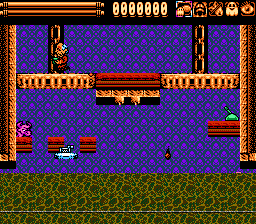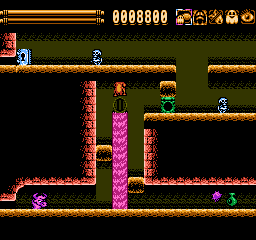Trending
Opinion: How will Project 2025 impact game developers?
The Heritage Foundation's manifesto for the possible next administration could do great harm to many, including large portions of the game development community.
We interview Andrew Marsh about the litany of challenges that come with creating a puzzle game and where he draws his influences.

Creating fun and unique puzzles can be, well, puzzling. The Meating is no exception to the litany of challenges that come with creating a puzzle game.
Andrew Marsh is one of the designers for The Meating. While Marsh has a tendency to draw influence from classic games like the Super Mario titles, for this game he looked to recent titles.
“I decided to pull from more modern puzzle platformers for this game,” he said. “Games like Hollow Knight and Super Meat Boy were definitely big influences on me while I was coming up with ideas for the levels.”
There’s always an urge and desire to create original content. No matter how many sources you pull inspiration from, originality is key. According to Marsh, The Meating has a unique spin to its puzzle design with the use of the abilities you can unlock throughout the game.
Throughout the game, you’ll be given five spectral ghost powers to solve these puzzles with, aside from the basic jumping, levitating and charging: telekinesis, thermokinesis, possession, projection and incorporeality.
“The coolest one is definitely the possession ability that allows the player to take control of a nearby enemy to solve puzzles. There's something satisfying about seeing a platform that you can't reach and then possessing a spider to climb up to it,” he said.

In addition to controlling enemies, you’ll have the ability to pass through objects, control the temperature and even phase from the spirit world into the physical.
Creating puzzles for The Meating was no simple task. One of the biggest and most unique challenges was working with the retro hardware, as opposed to modern digs.
“In modern game development, a designer is able to open up a level in the game engine, make adjustments, and then test it right there seamlessly. This process isn't as easy to do with retro development, so we have to try to think ahead about where the player might be able to break out of the intended path that we are setting for them,” Marsh said. “Generally, that starts out with drawing a sketch of the level, whether that be on paper, or digitally so that we can try to visualize what will and will not work. From there we use either a map creation tool or image editing software depending on the project and we start to build the level out.”
After the level is built, the game must be compiled to test it and see what works. Then it’s a matter of going back to the source, making adjustments, compiling again, rinse, repeat, until it’s perfect.

So, what makes a puzzle game perfect? To Marsh, the crown of all puzzle games goes to a classic, Tetris. However, there are other games he gives a hat-tip to.
“If we're looking at something in the puzzle platformer genre, then I feel like you can't get any better than the simple fast-paced fail and retry gameplay of something like VVVVVV. The key to making the perfect puzzle game is to make something difficult, but you want the difficulty to be on the player. If the player ever feels like their skills aren't what's at fault when they fail, then there is a problem.”
The feeling of trial and error and skill-based gameplay are reflected right in the gameplay of The Meating as you try, and occasionally fail, to use your ghostly powers to phase through each of its many puzzles.
Want more tips straight from the retro pros? Welcome to our Discord!
Get mad meat on The Meating page now!
Read more about:
BlogsYou May Also Like